Baiona (Bayona in Spanish) is one of the prettier and more interesting medieval port towns to be found on arguably the most beautiful part of Spain’s coastline – The 300km stretch of cliffs, coves, beaches and crystal clear waters that forms Galicia’s south west coast of Rias Baixas. This area contains no less than 55 blue flag beaches, 5 of which are to be found in Baiona itself. Small wonder that the town’s population of less than 12,ooo swells to over 50,000 during the summer months of July and August.
We were lucky to find a parking spot on the Avenida Playa Ladeira next to the long fine white sandy beach of the same name and, from there, we walked along the Paseo Maritimo de Baiona towards the old town. This path takes you past the smaller but no less pretty Santa Marta Beach to the harbour and then on to the Fortress of Monterreal which is itself surrounded by four more glorious beaches; the A Ribeira and the A Barbeira (both soft white sandy beaches) on the east side of Monterreal and; the Praia dos Frades (a fine pebble beach) and the A Concheira (a wilder rocky beach) to the west and favoured by surfers.
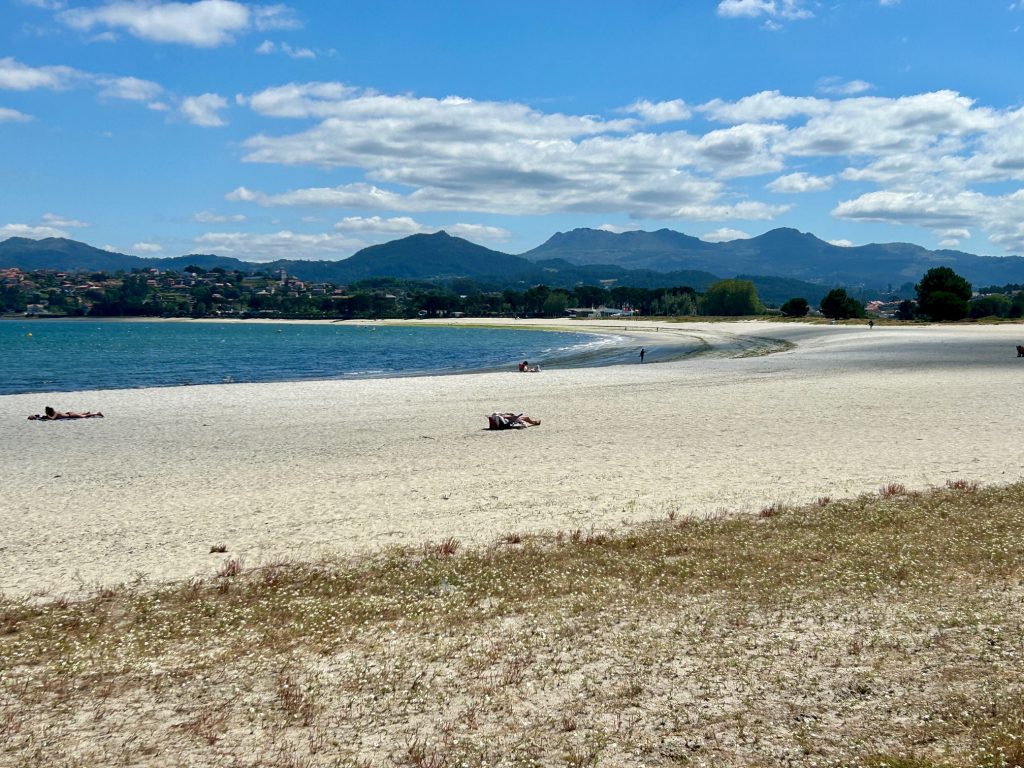
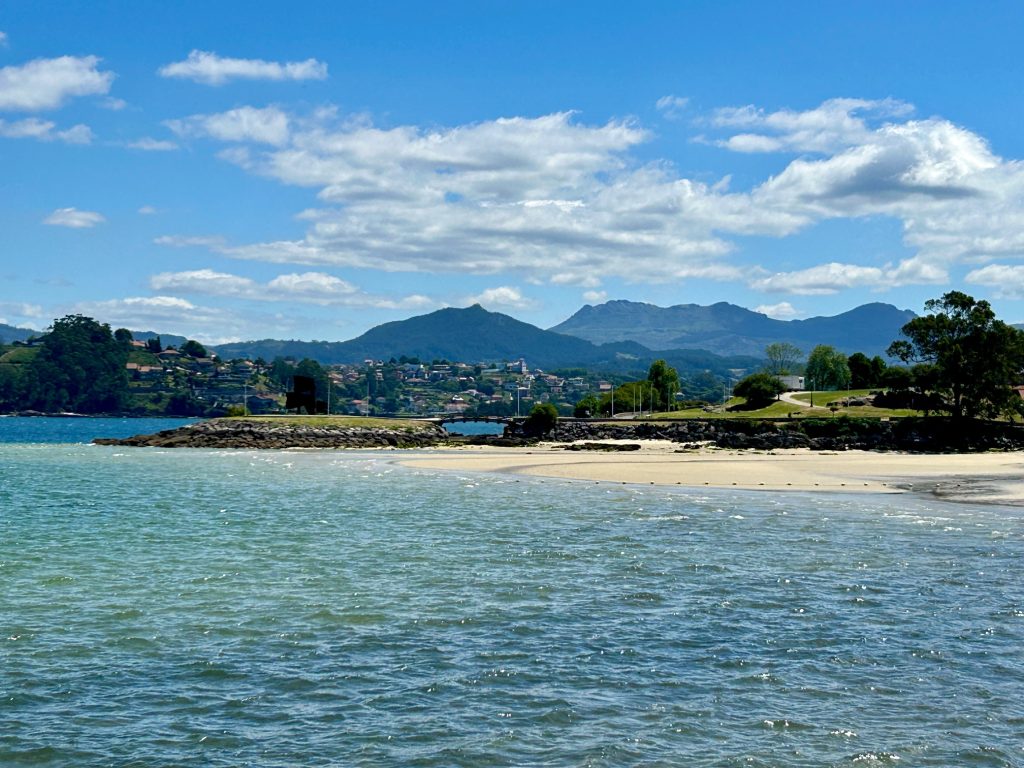
Covering the Monte Boi promentory, an area of some 18 hectares (that’s more than 25 football pitches), the Fortress of Monterreal is one of Spain’s larger fortifications. Construction began during the 12th century but it took more than 400 years to complete. The walls and three remaining towers are in remarkably good condition and this is due in part to some of the battlements being restored as recently as the 1960’s when a decision was made to convert a large part of the fortress into a Parador. For the uninitiated, Paradors are a chain of 3 to 5 star hotels established as part of a government initiative to accommodate tourists and travellers while at the same time showcasing Spain’s culture, nature and/or gastronomy. Currently, there are more than 100 such hotels dotted across Spain with more than half of them located in historical buildings (usually castles or monasteries). This was the second Parador I was able to access during this tour, the other being in Ciudad Rodrigo.
It is possible to walk the walls of the castle but a more rewarding walk is the 2 kilometre Paseo de Monte Boi which loops all the way around the fortress and provides access to the promentory’s four beaches (already mentioned) and it’s numerous rocky coves. There are many rest areas and viewing points along the walk and the views towards the Cies Islands are splendid.
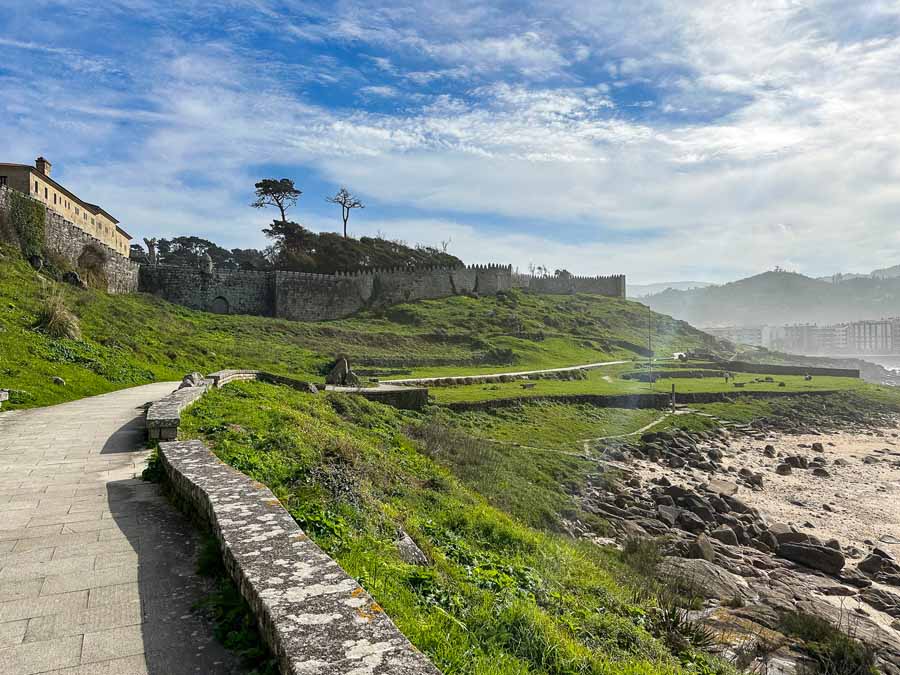
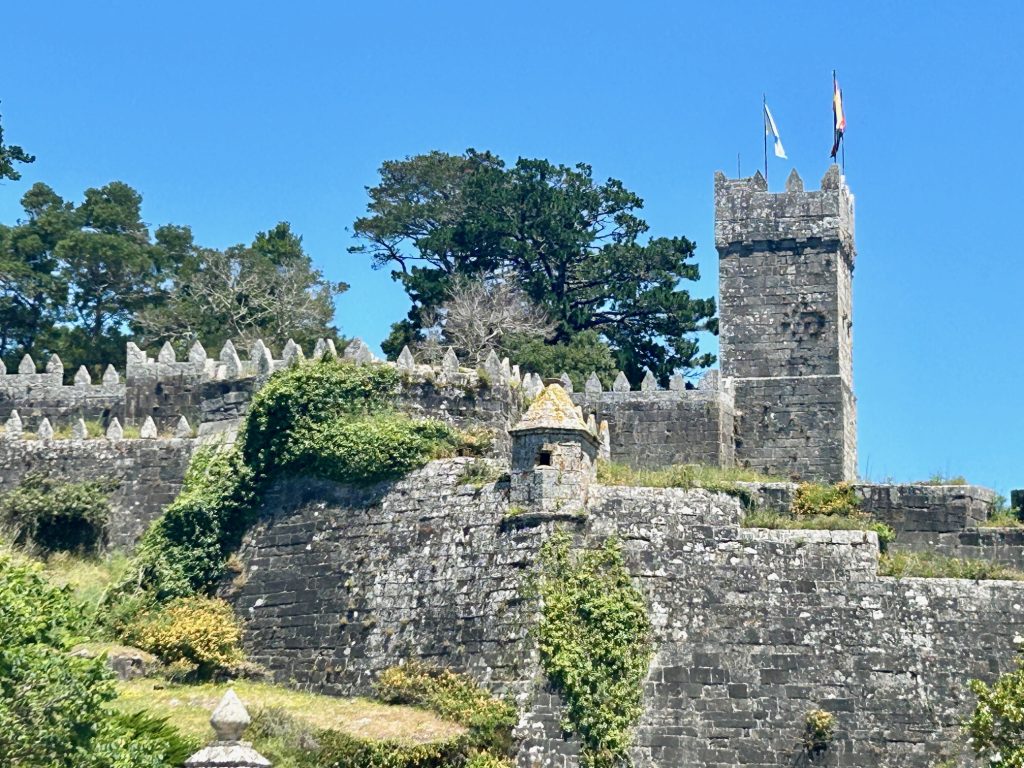

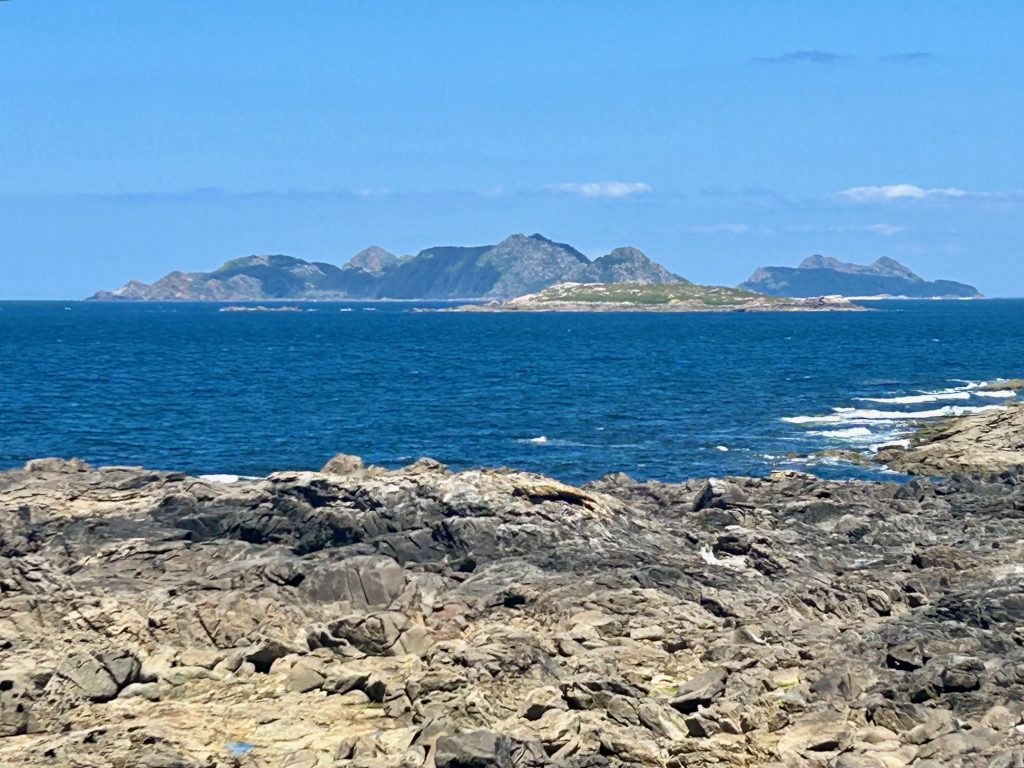
Other points of interest during the walk around the Paseo de Monte Boi include the Tourist Information Centre, the Parque da Palma and, alongside the park, the Entre Dos Mundos Monument (Encounter Between Two Worlds Monument) which commemorates the arrival of the Pinta in Baiona on 1 March 1493 after it’s return to Spain following the discovery of the New World. The Monument depicts the meeting of the two different cultures (the Old and the New Worlds) and it was created in 1993 to mark the 500th anniversary of the arrival of the Pinta in Baiona

One more interesting feature visible from the Paseo de Monte Boi and open to the public is a life size replica of the caravel La Pinta which together with the Santa Maria and the Nina were the three ships which formed Christopher Columbus’ expedition of 1492 in search of the New World. La Pinta was captained by Martin Alonso Pinzon who, tragically, died within a month of his return to Spain.
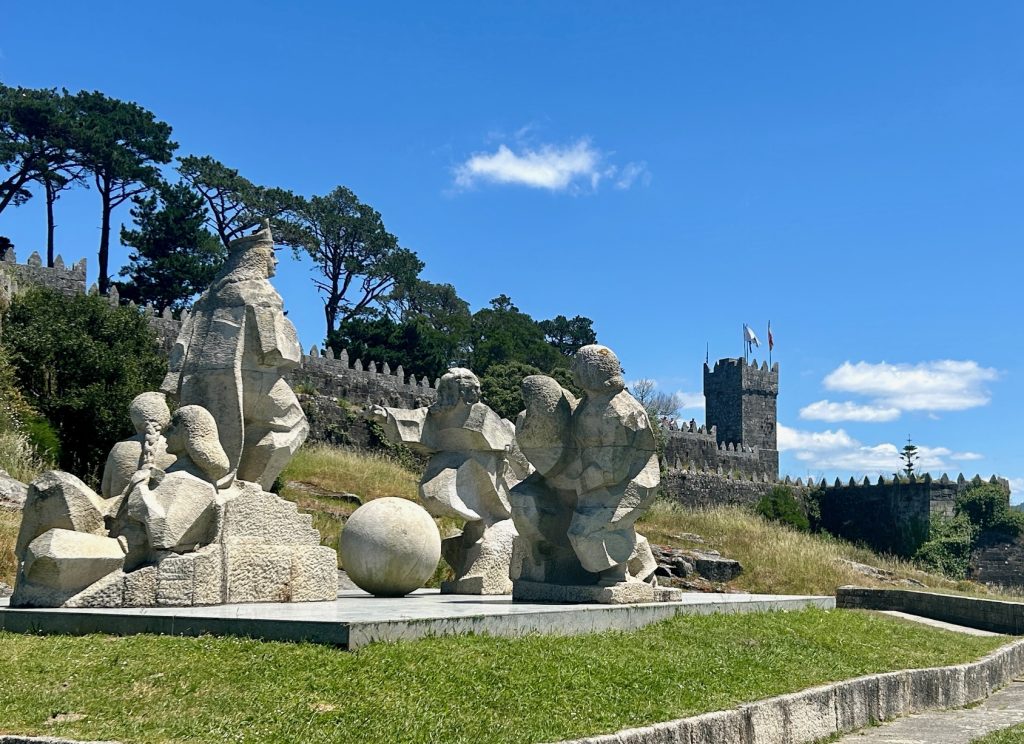
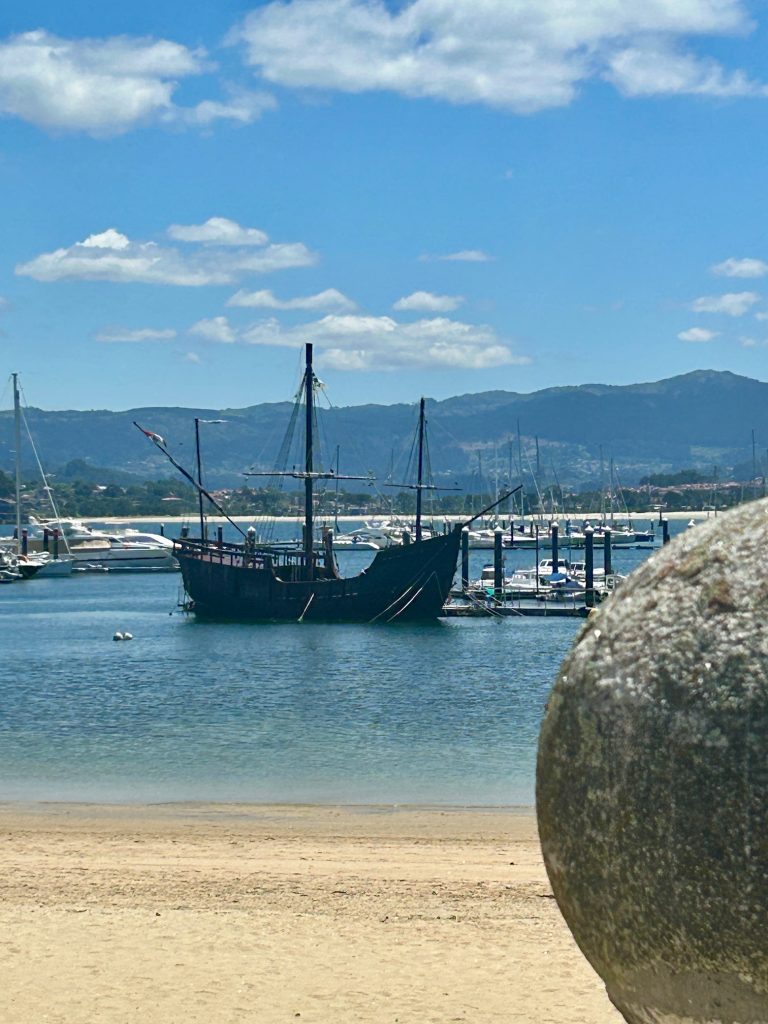
It was time to eat. We set off back down the Paseo Maritimo and, ignoring the more expensive bars and restaurants on the seafront, we looked to eat in the old centre of the town which is to be found directly behind the grand parade (the Avenida Monterreal). The old town isn’t very large but, there are numerous authentic tapas bars sprinkled among the Galician terraced houses which line it’s narrow streets and lanes.
I wish I could remember the name of the first tapas bar we stopped at because not only did they follow the time honoured tradition of supplying a free tapas with every drink purchased but; they served up the best pulled pork sandwich I have ever eaten. Of course they also offered my favourite, the Galician Octopus (Pulpo a Feira) and a wide variety of other mouthwatering tapas, including Gooseneck Barnacles (Percebes), Padron Peppers (Pimientos de Padron) and Galician Pie (Empanada Gallega). Because I would be driving again later in the day I had to limit myslf to the one small beer but, otherwise… well, this area is the home of Albarino wine.
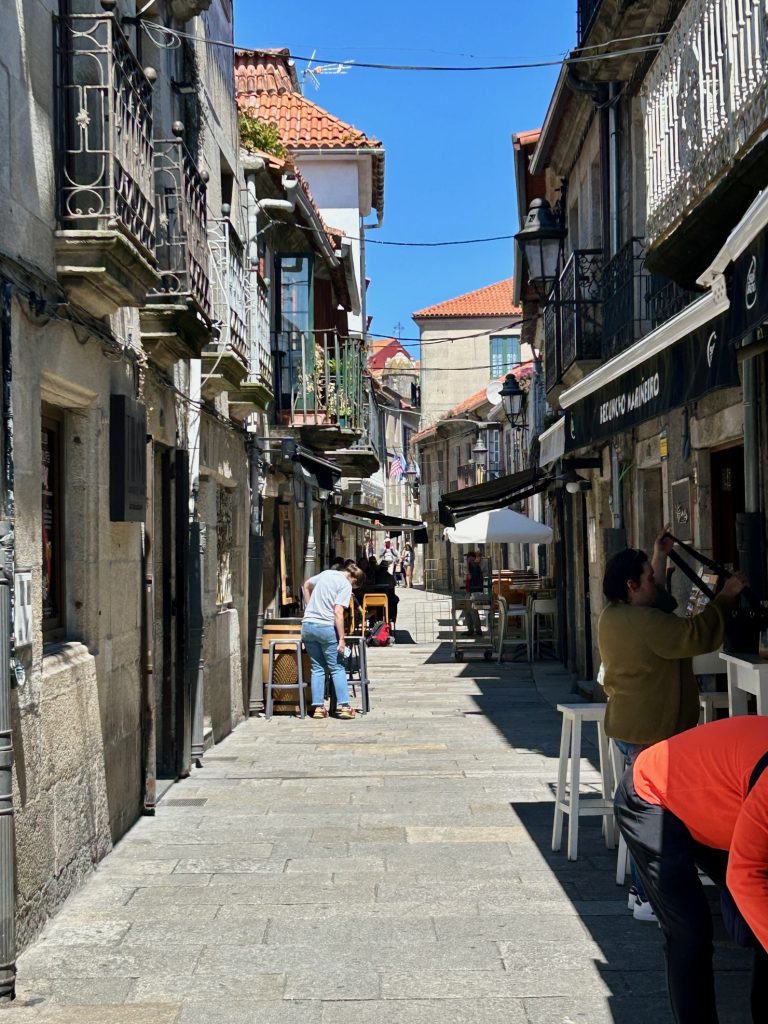
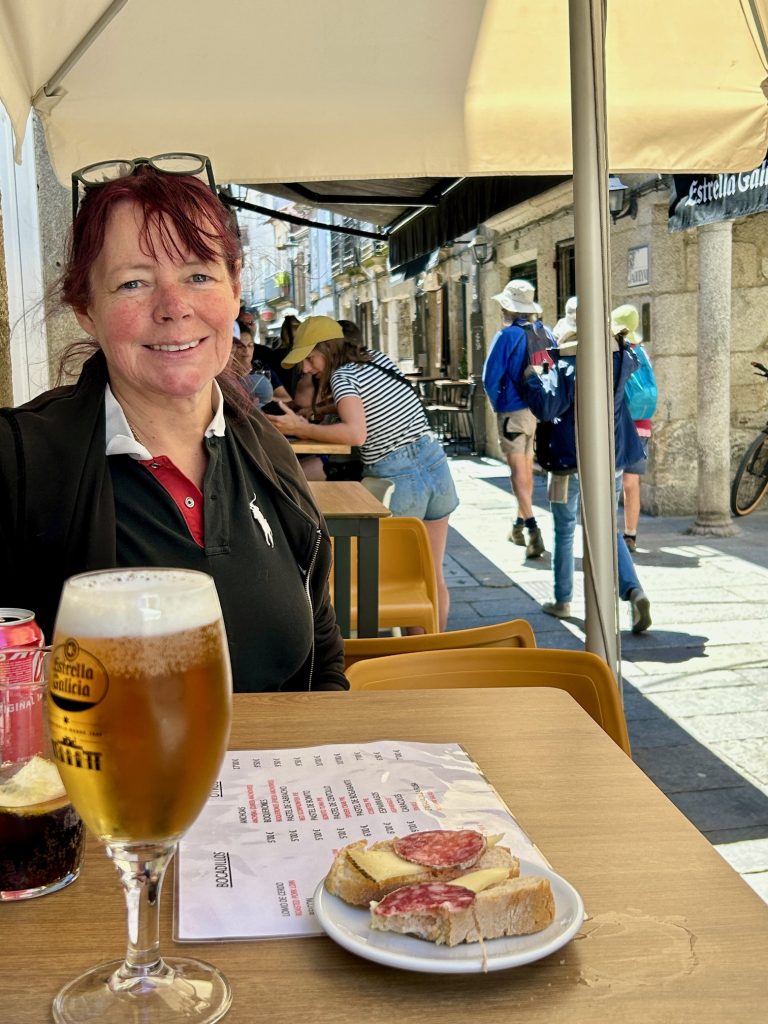
Thoroughly revitalised, Vanya and I had time for a further short wander around the old town. I’ve said previously in this website that Vanya is not into churches (neither figuratively nor literally) and so I was left to visit some of the town’s religious buildings. These included the 16th century Santa Casa de Misericordia, the 1695 Saint Liberata Sanctuary, the nearby 13th century Collegiate Church of Saint Mary (built by Cistercian monks) and the 13th century hermitage of Santa Marta (which had to be rebuilt after being destroyed by no less a person than Sir Francis Drake in 1585).
The most interesting was the small Santa Casa de Misericordia de Baiona which, as we arrived, was celebrating it’s 450th anniversary (1574 to 2024)
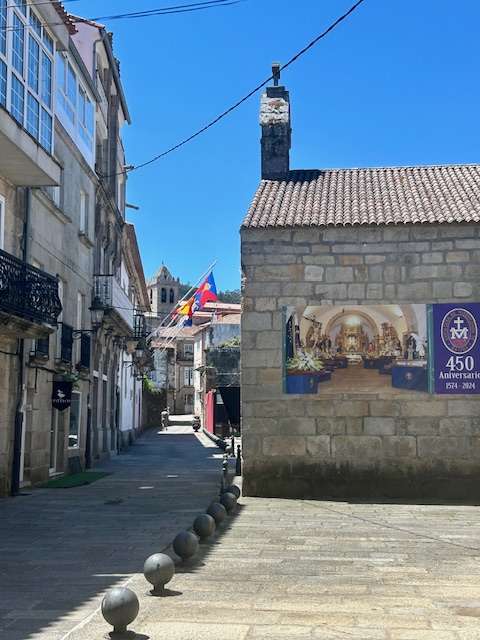
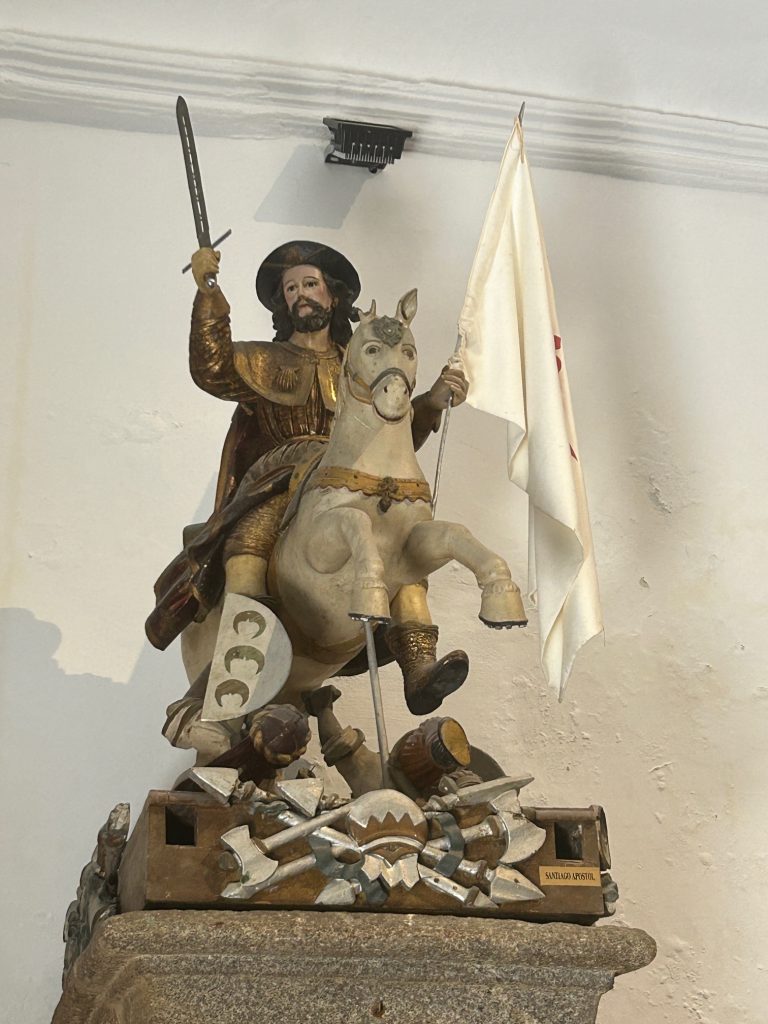
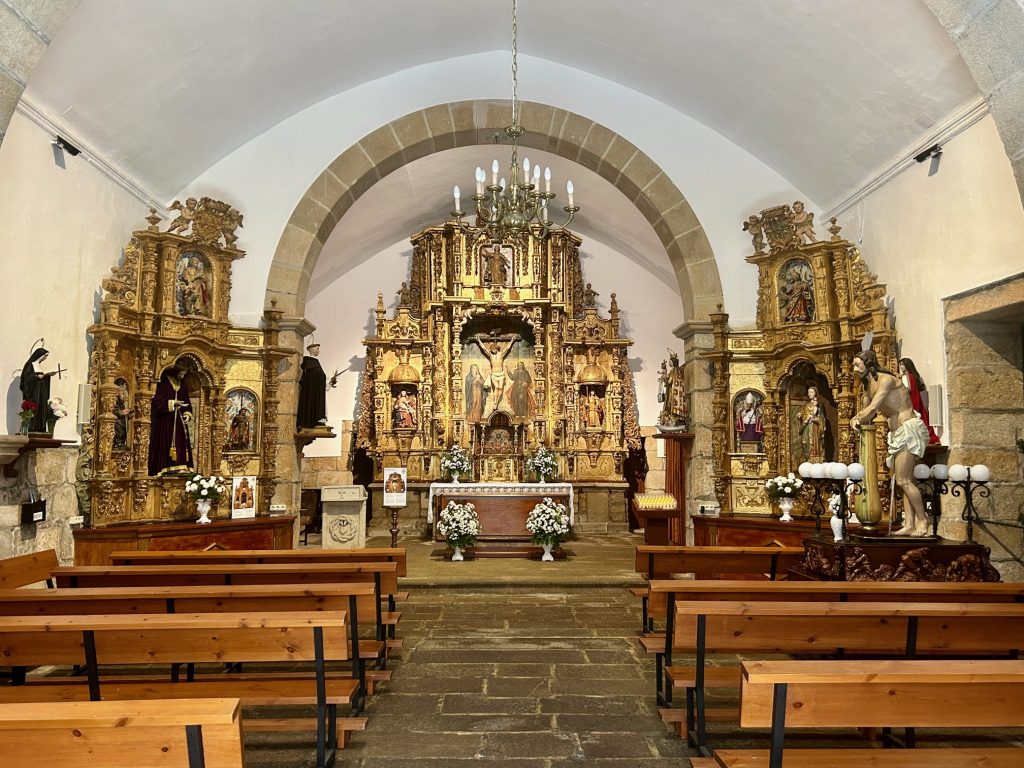
The final word in this post must go to the beautiful Cies Islands which, sadly, we were unable to visit because dogs are not allowed on the island. Baiona is an access point to the Cies Islands during the summer months, running ferries to the three islands of Monteagudo, Faro and San Martino. I cannot tell you much at all about the islands but they are now part of a protected area (the Atlantic Islands of Galicia National Park) renowned for their natural beauty (the Guardian newspaper considers Rodas Beach to be the best in Europe while the Sunday Times considers it to be one of the best in the world). Access is limited to 2,000 people per day with tickets having to be bought in advance from an official website. It is possibe to camp on the archipelago (at an official site) but otherwise visitors can only stay the day. I’ll not say anymore about the place until I’ve been there.


